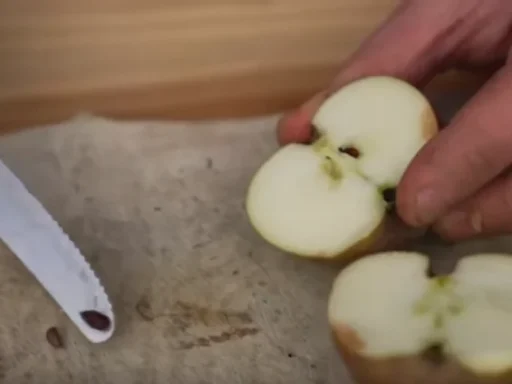Gardening can be an exhilarating yet slightly overwhelming journey for many, especially for beginners. The questions often swirl: “Where do I start? What should I plant? Will I even see a harvest?” Whether you’re expanding your existing garden or diving into your very first vegetable bed, this guide will provide you with the inspiration and practical steps you need to cultivate a thriving garden.
Why Choose Raised Garden Beds?
One of the best options for novice gardeners is to utilize raised garden beds. These structures elevate the soil above ground level, offering several advantages:
- Improved Drainage: Raised beds promote better drainage, allowing the growing medium to dry out faster after rainy periods. This feature is particularly valuable in spring when wet soil can impede growth.
- Soil Warmth: Drier soil tends to warm up more quickly in the spring, providing an optimal environment for sowing seeds. This means you can start your planting earlier in the season.
- Enhanced Organization: Raised beds create a tidy appearance in your garden, allowing for organized planting and easier access to your crops.
Getting Started: Materials You’ll Need
To successfully set up a raised vegetable bed, gather the following materials:

- Raised Bed Frame: You can purchase ready-made options like pallet collar beds or construct your own using untreated wood. Ensure the wood is thick (at least 1-2 inches) to create a durable structure.
- Cardboard: Use plain cardboard as a weed barrier. Avoid glossy or plastic-coated types, which can leach harmful substances into the soil.
- Growing Medium: Choose a mix of high-quality soil, compost, and organic materials to fill your bed. Well-rotted manure, mushroom compost, or your homemade compost can provide excellent nutrients.
- Basic Tools: Have a wheelbarrow, shovels, trowels, and a spirit level handy for construction and planting.
Building Your Raised Bed
Follow these steps to create your raised vegetable bed:
- Location: Choose a sunny spot that receives at least 6-8 hours of sunlight per day. If you have limited sun, don’t worry; many leafy greens can thrive in partial shade.
- Mark the Area: Use stakes or canes to outline the dimensions of your bed. A typical size is 3 feet by 4 feet (approximately 100 by 120 centimeters), but you can adjust based on your space.
- Prepare the Ground: If your area is sloped, level it out to prevent water runoff. This can be done by digging into the slope or building up soil on the lower side.
- Weed Barrier: Lay down a layer of cardboard over the prepared area to suppress weeds. Ensure good overlap to block any potential growth.
- Fill the Bed: Start filling your bed with your chosen growing medium. A combination of organic materials like prunings, compost, and topsoil will yield a nutrient-rich environment. Pack the soil down to remove air pockets, which will help your plants thrive.
Choosing Plants for Your Vegetable Bed
Now comes the exciting part: selecting what to grow! Here are some excellent options for beginners:
- Salad Onions: Plant clusters of spring onions to enjoy fresh salads.
- Radishes: These quick-growing veggies are perfect for beginners.
- Lettuce: Various types thrive in raised beds and can be harvested throughout the season.
- Peas: Easy to grow and delicious, they can be sown for shoots or full-sized peas.
- Beetroot: These colorful roots are satisfying to plant and harvest.
Make sure to space your seeds or plants appropriately, allowing each crop enough room to grow.
Maintaining Your Vegetable Garden
After planting, maintenance is key to a successful garden. Here are essential care tips:
- Watering: Keep the soil consistently moist, especially during dry spells. A layer of mulch can help retain moisture.
- Weed Management: Regularly check for weeds that may sprout through the cardboard or soil. Hand-pulling is the most effective method for controlling weeds in raised beds.
- Fertilizing: Use organic fertilizers or compost to replenish nutrients throughout the growing season.
- Pest Control: Monitor your plants for pests and diseases. Companion planting and organic deterrents can help maintain a healthy garden ecosystem.
- Harvesting: Know when to harvest your crops to enjoy them at their peak freshness. Regular harvesting can also encourage further growth.
Conclusion
Starting a vegetable garden can be a rewarding endeavor. By utilizing raised beds and following these straightforward steps, you can cultivate a flourishing garden that not only provides fresh produce but also offers a sense of accomplishment and connection to nature. Don’t hesitate to experiment and learn from your gardening journey; each season brings new opportunities to grow.
Frequently Asked Questions
- What is the best time to start a vegetable garden?
- The best time to start a vegetable garden typically depends on your local climate. Generally, spring is ideal for most crops, but certain vegetables can be planted in late summer or fall.
- How much sunlight do vegetable plants need?
- Most vegetable plants require at least 6-8 hours of direct sunlight per day for optimal growth.
- What types of soil are best for vegetable gardening?
- A well-draining, nutrient-rich soil is ideal for vegetable gardening. A mix of topsoil, compost, and organic materials is recommended.
- Can I grow vegetables in containers?
- Yes, many vegetables can be successfully grown in containers. Ensure your pots have proper drainage and provide adequate space for roots.
- How often should I water my vegetable garden?
- Watering frequency can vary based on weather conditions and soil type. Generally, aim to keep the soil consistently moist, especially during dry spells.
- What are companion plants, and why are they beneficial?
- Companion plants are different plants grown together for mutual benefit, such as pest control and enhanced growth. They can improve overall garden health.
- How can I deal with pests in my vegetable garden?
- Use organic pest control methods, such as introducing beneficial insects, using insecticidal soap, or companion planting to deter pests.






